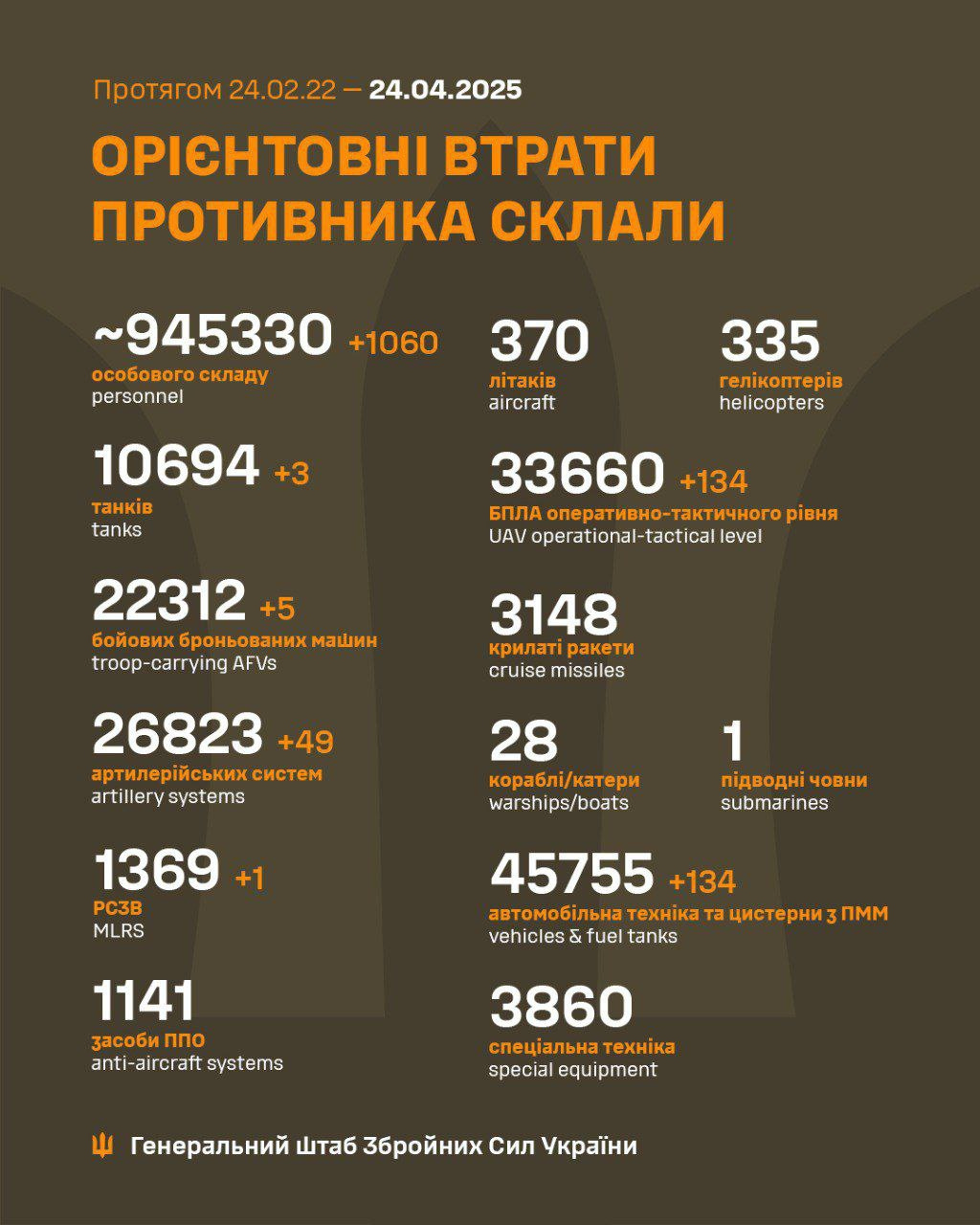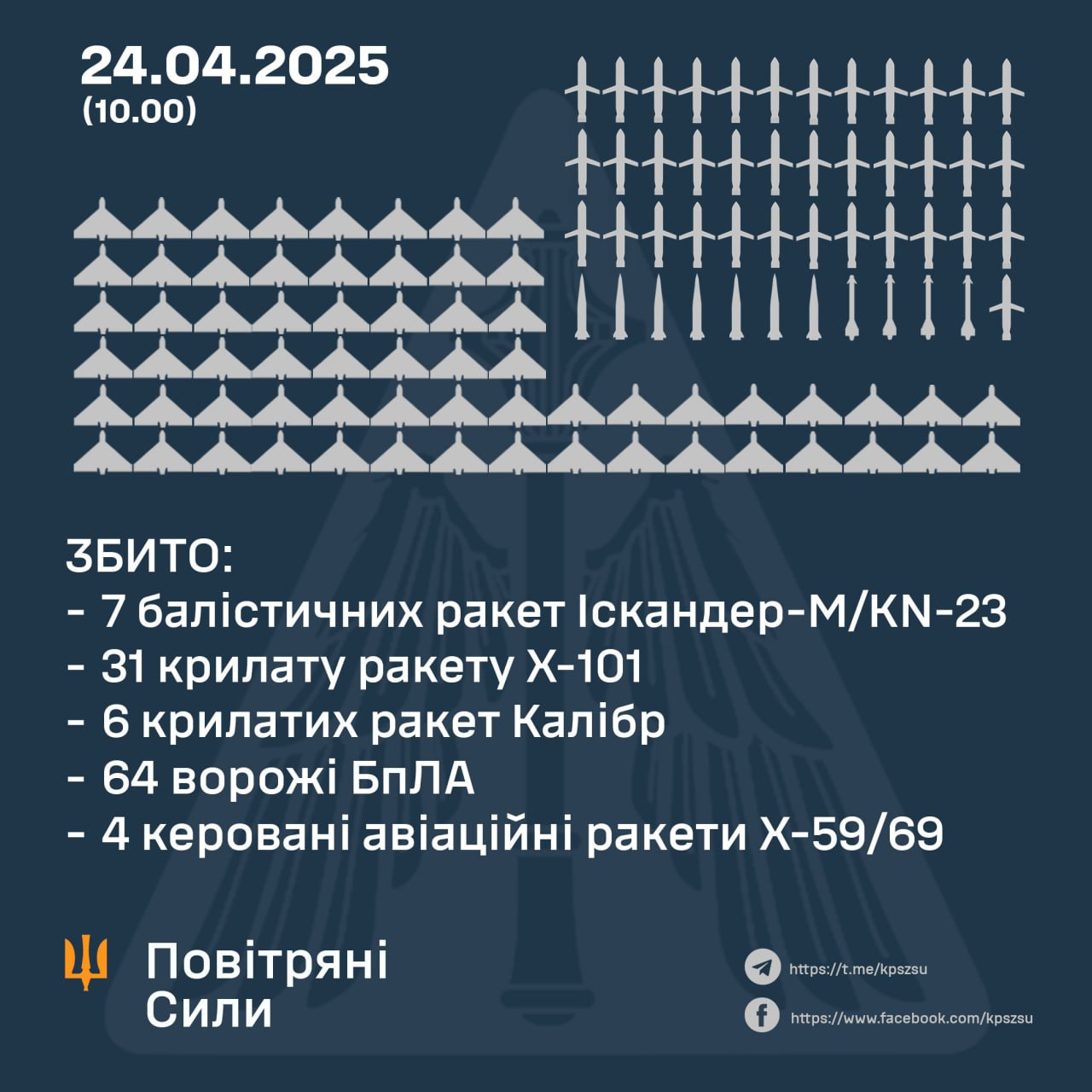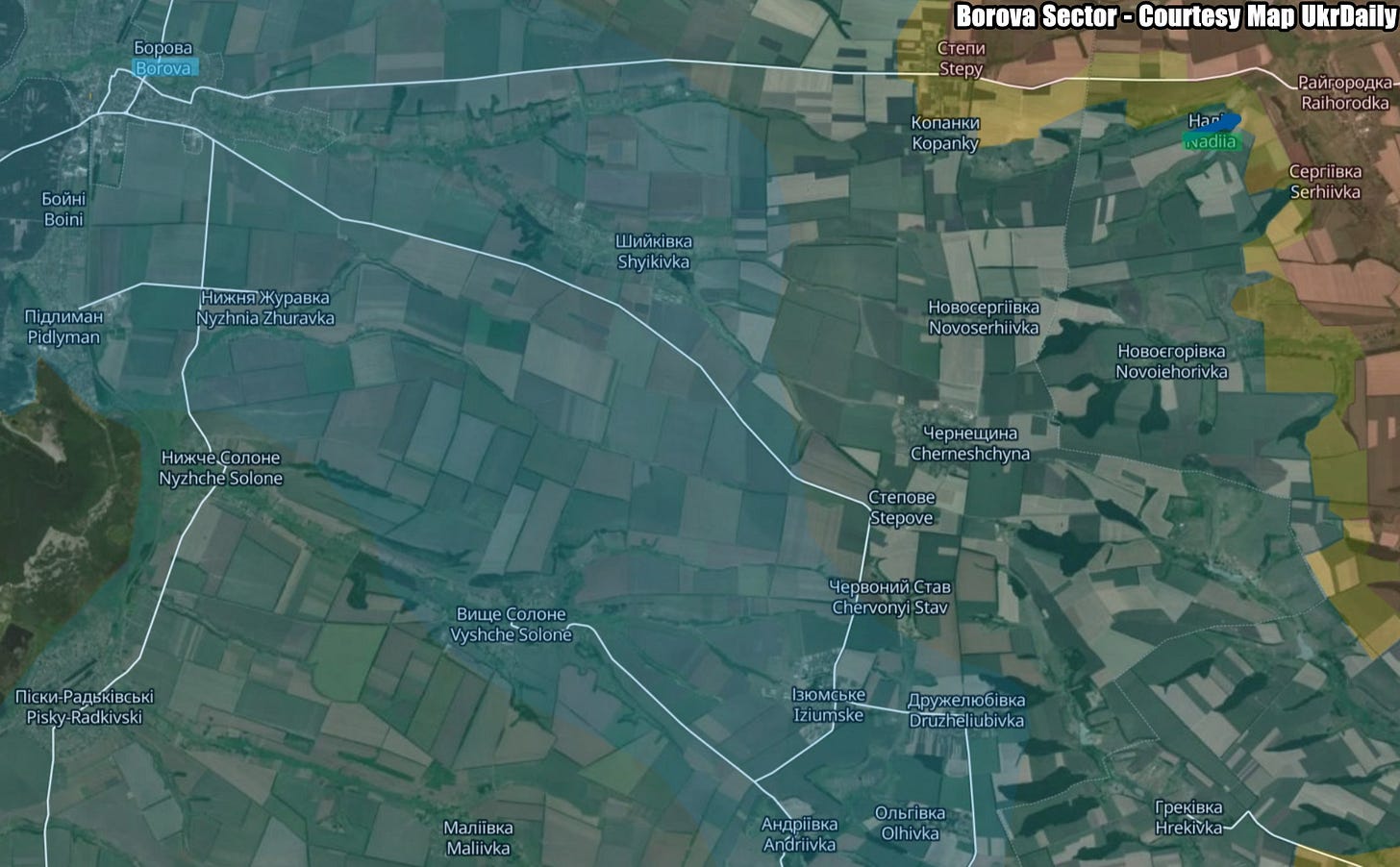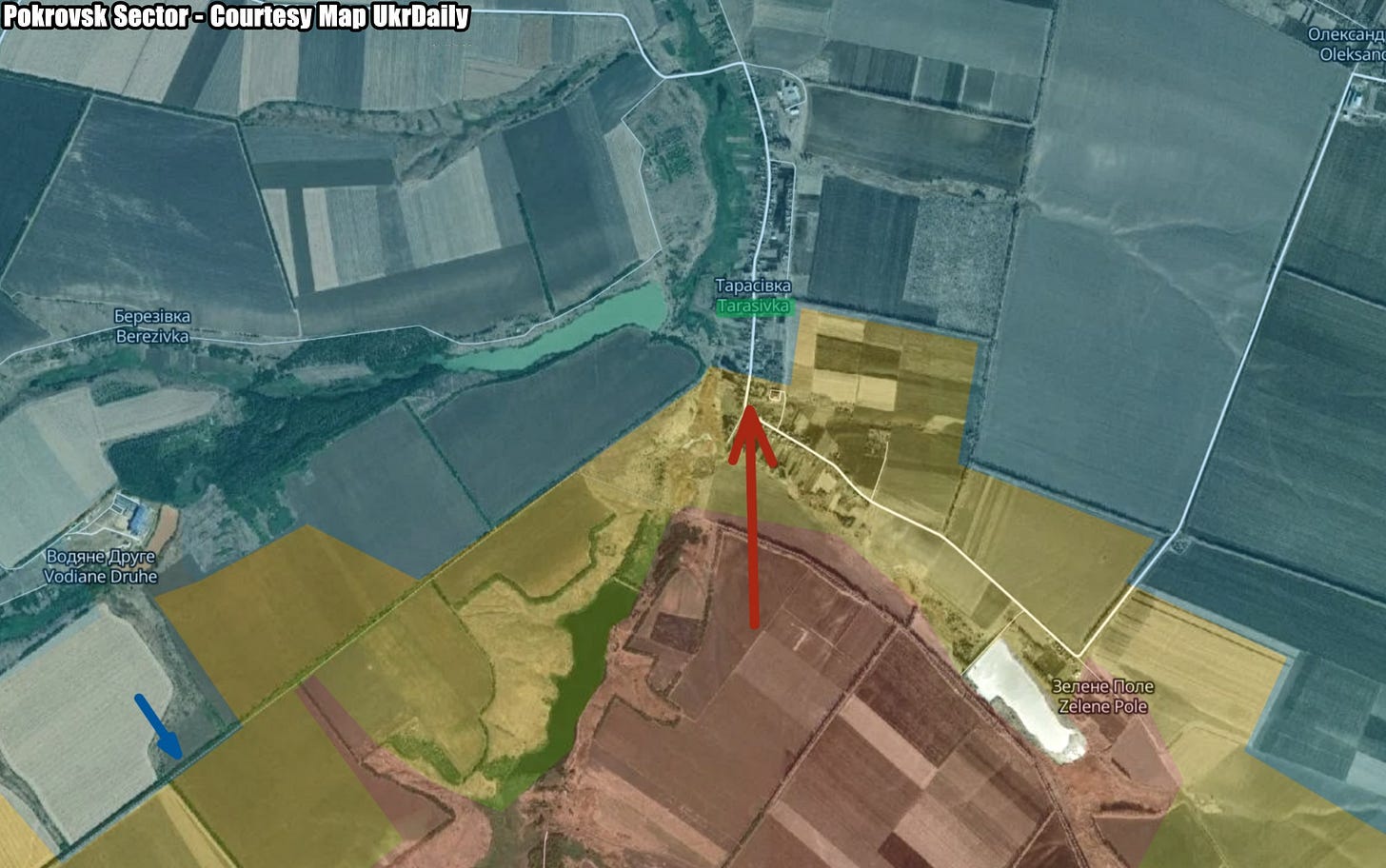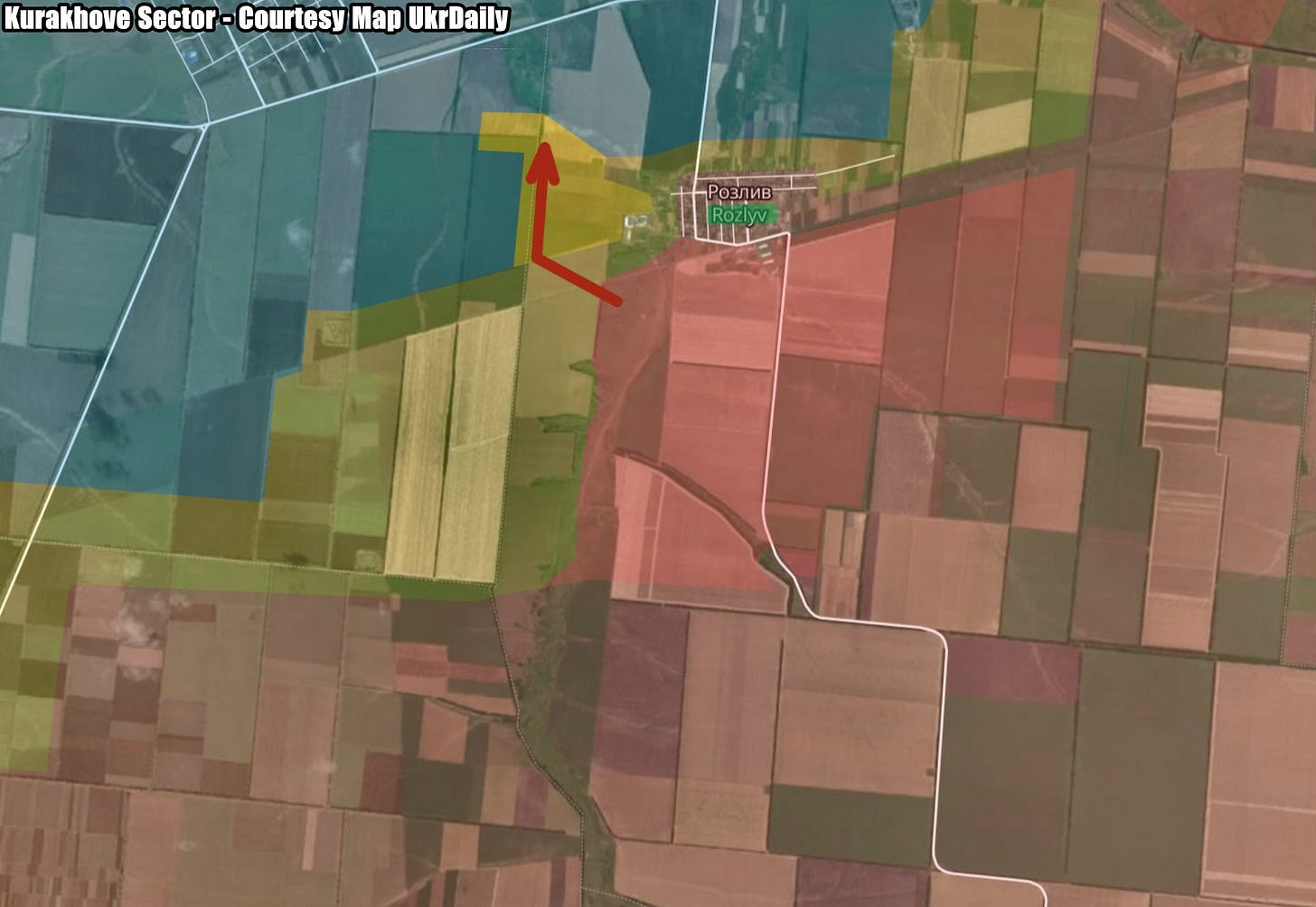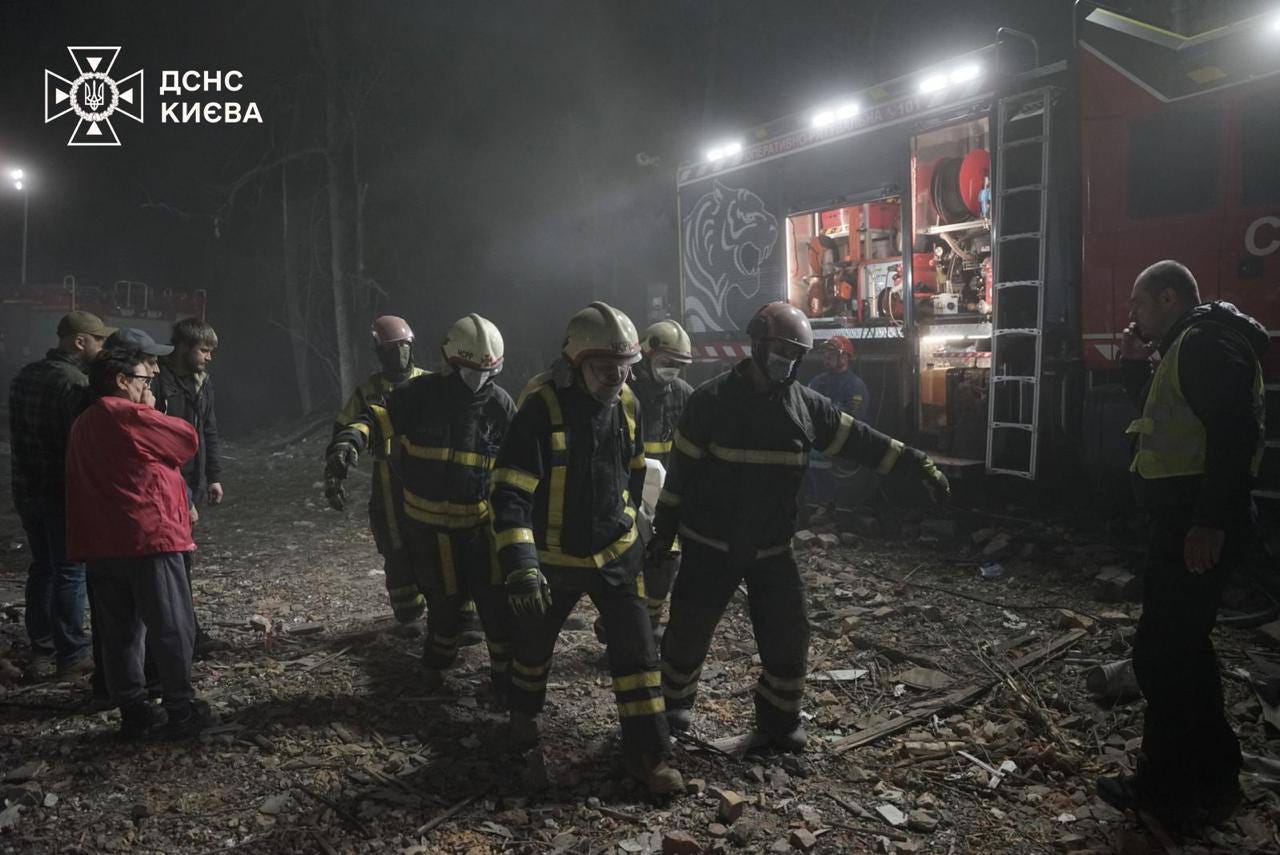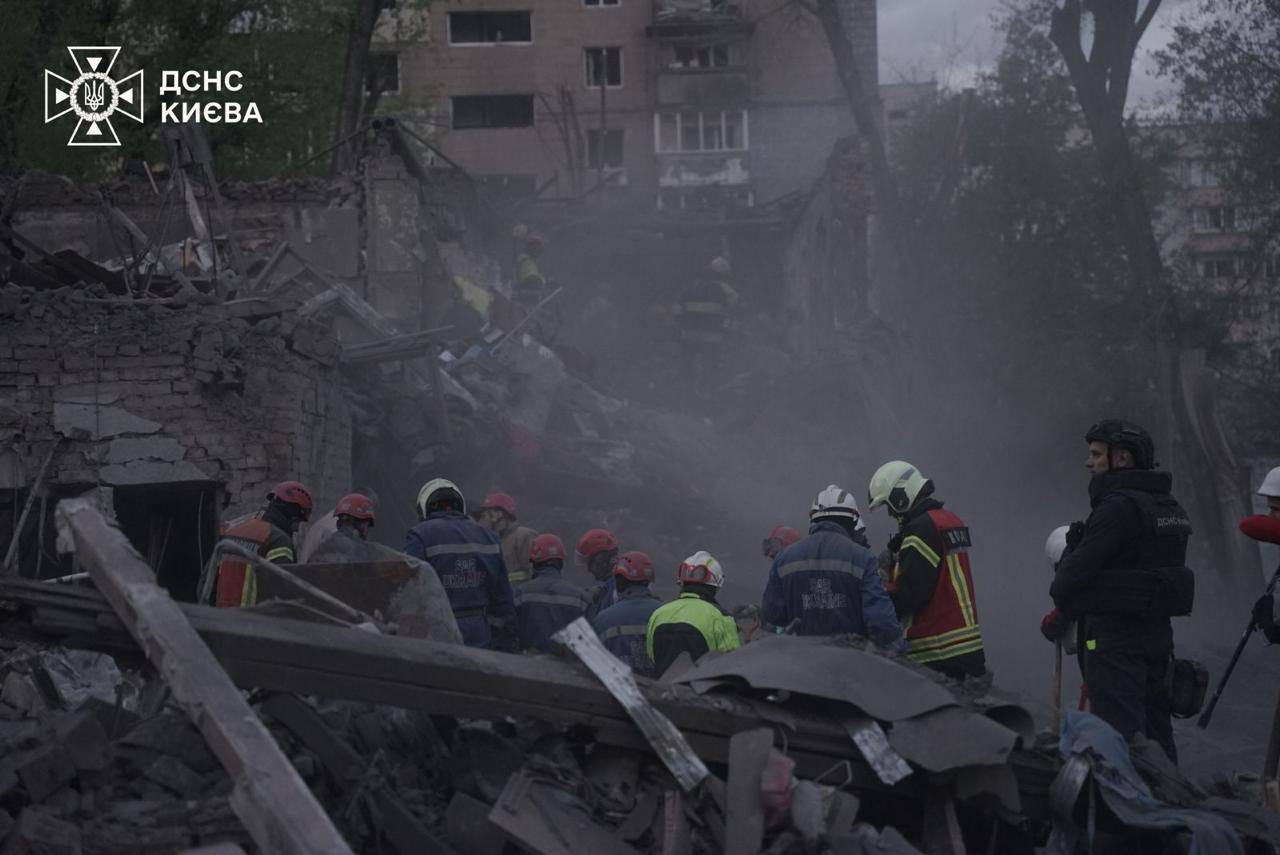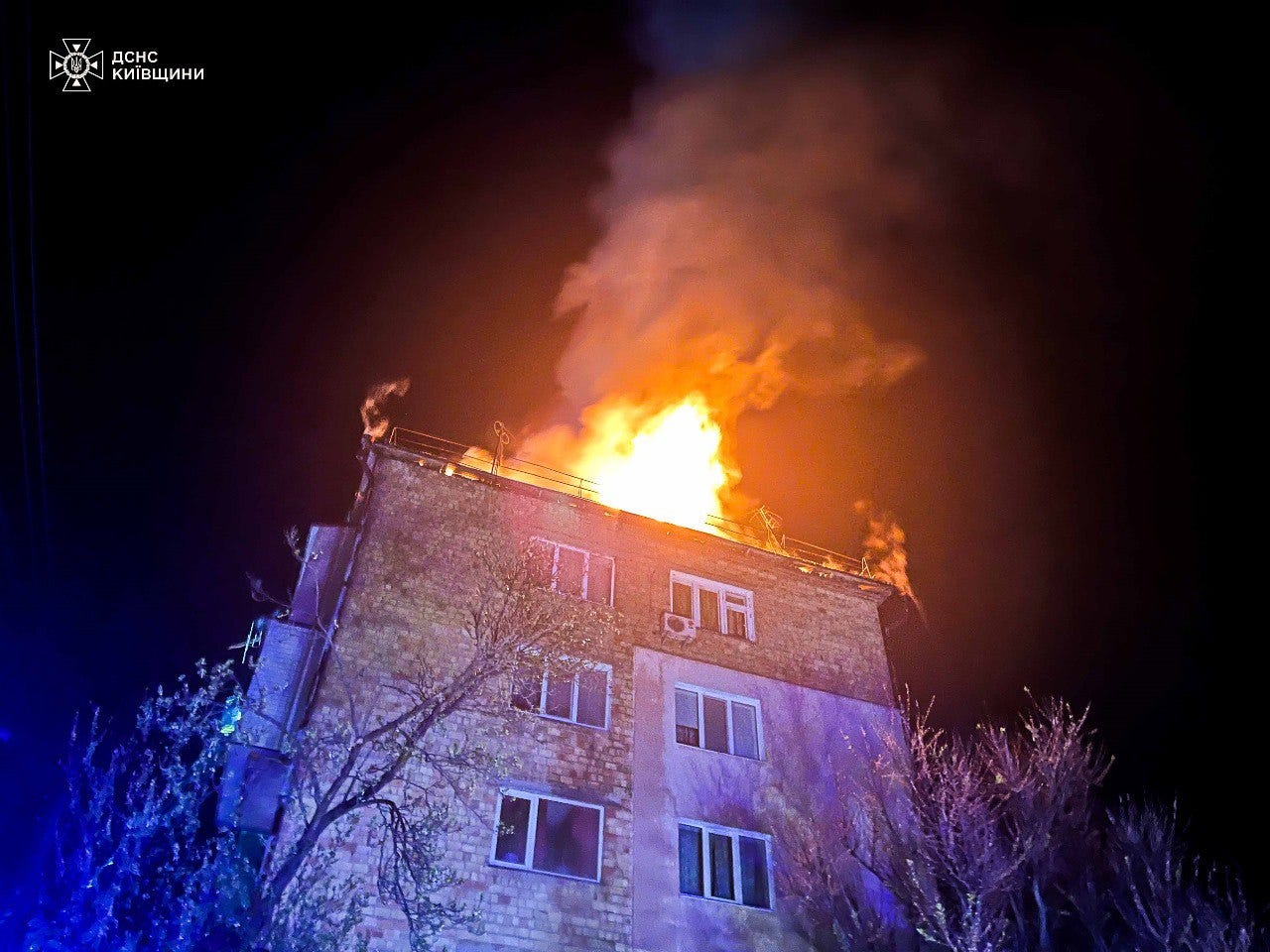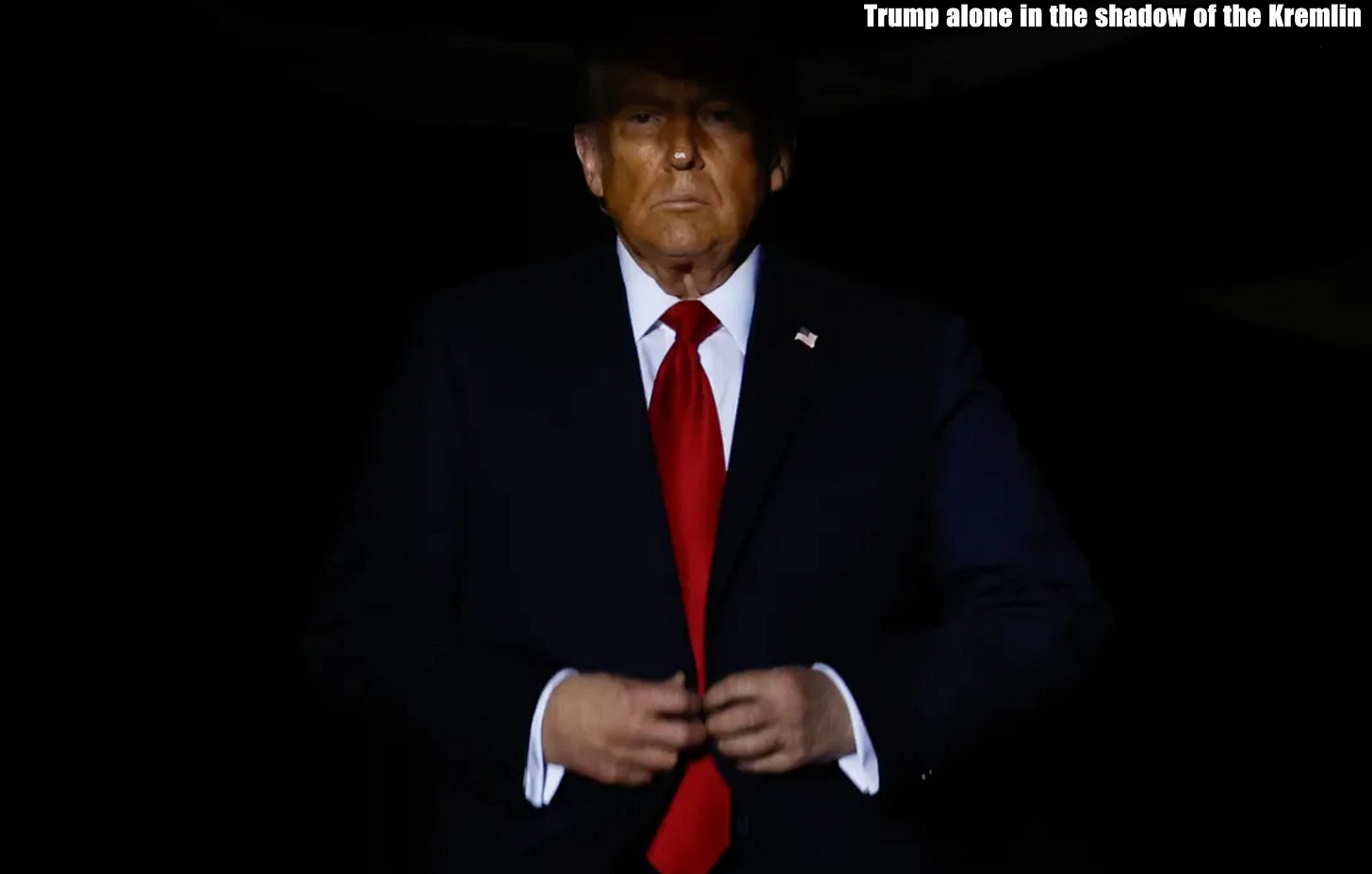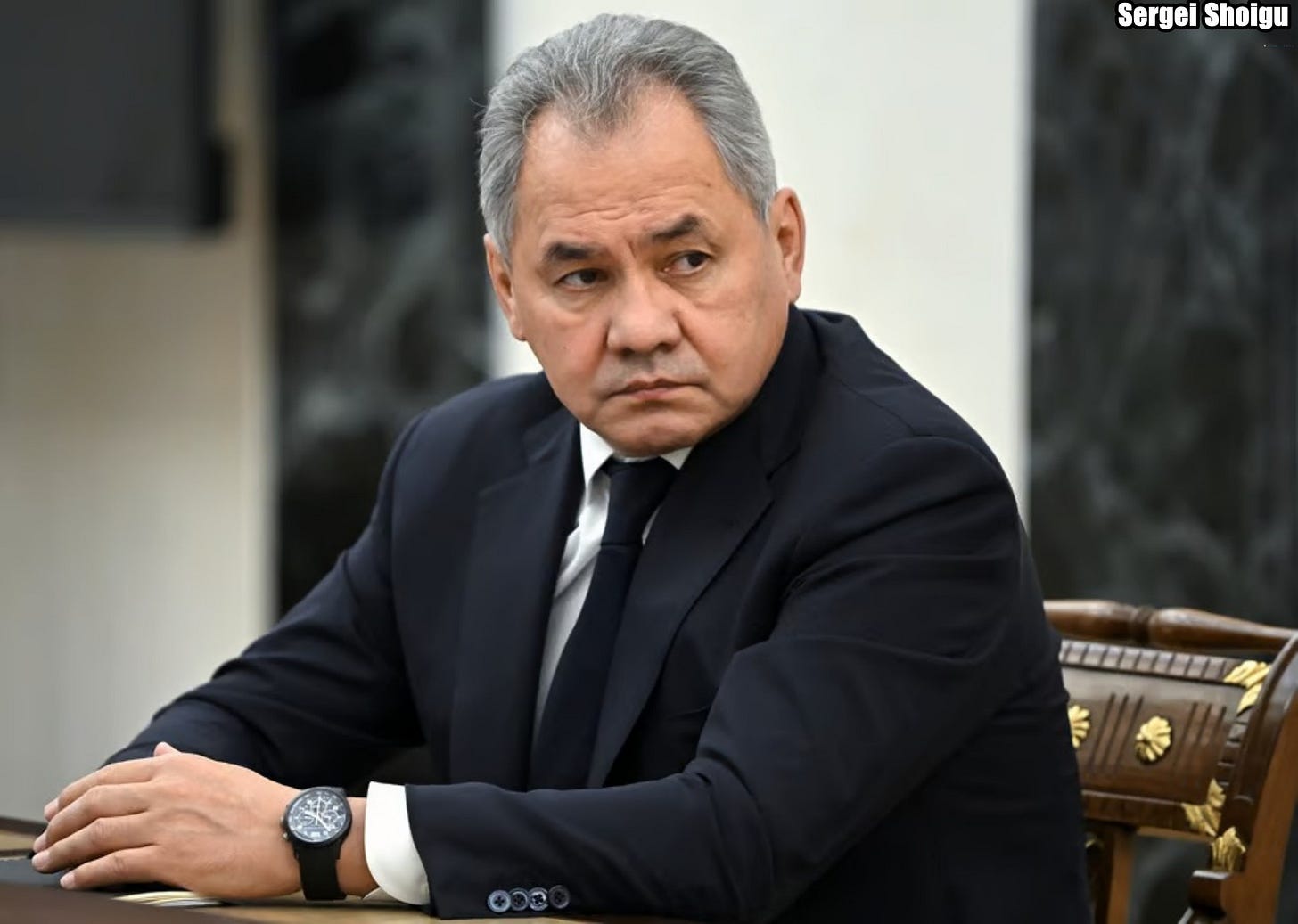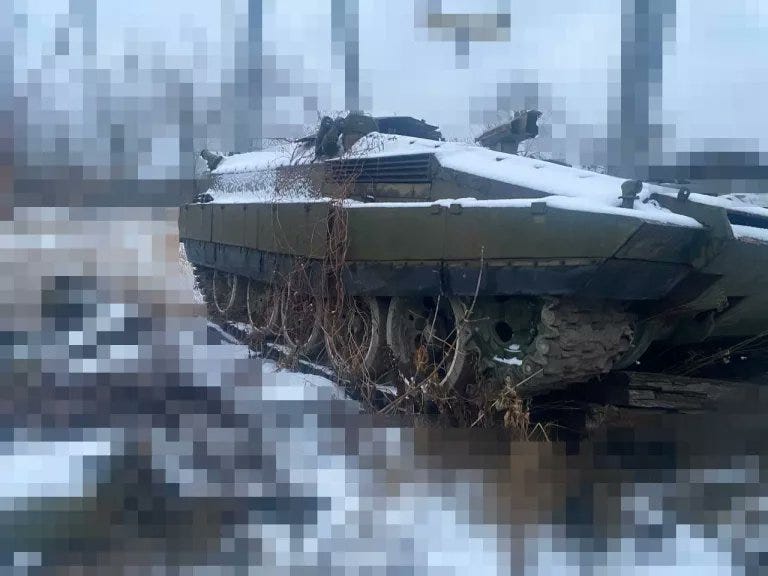Slava Ukraini! In early 2022 I began a Telegram channel aggregating news from a number of sources daily on the war in Ukraine. In June 2023 I began providing a daily draft for the Ukraine War Brief Podcast collecting news from over 70 sources daily, which formed the basis of the script. While the Podcast no longer exists I have continued to make this Brief available for my followers here on Substack for those who wish to keep up with the news from the war.
All the latest news on the Russo-Ukraine War 6 days per week
ALONG THE CONTACT LINE
GSAFU Morning Report
For: Apr 24, 2025
The General Staff of the Armed Forces of Ukraine in its Operational Information update at 08:00 on Apr 24 stated that day 1156 of the full-scale invasion of the Russian Federation against Ukraine had begun.
The situation on the line of combat remains tense in some sectors. Ukrainian defenders continue to actively counteract the Russian aggressor, causing them significant losses in personnel, equipment and technology. Exhausting the enemy along the entire front line and continuing to disrupt the plans of Russian occupiers to advance deeper into the territory of Ukraine.
During the past day,168 combat engagements took place.
Over the past 24 hours, the enemy carried out 1 missile strike, 111 air strikes, used 2961 drones and fired approximately 6,300 artillery shells across the positions of Ukrainian forces and civilians.
Air Force Daily Report
48 MISSILES AND 64 ENEMY UAVS SHOT DOWN, 68 SIMULATOR UAVS FAILED TO REACH THEIR TARGETS (LOCATIONALLY LOST)
➖➖➖➖➖➖➖➖➖
On the night of Apr 24, 2025 (from 7:30 p.m. on Apr 23), the Russian occupiers carried out a combined strike on Ukraine with various types of air-, ground-, and sea-based missiles, as well as Shahed-type strike UAVs and other types of simulator drones.
The main direction of the attack is the capital of Ukraine, the city of Kyiv.
In total, the radio-technical troops of the Air Force of the Armed Forces of Ukraine detected and tracked 215 enemy air targets:
- 11 Iskander-M/KN-23 ballistic missiles (launch areas - Bryansk, Voronezh, Kursk regions - Russia);
- 37 Kh-101 cruise missiles from Tu-95MS strategic bombers (launch area — Saratov region);
- 6 Iskander-K cruise missiles (launch area - Donetsk region);
- 12 Kalibr cruise missiles (from the Black Sea);
- 4 Kh-59/Kh-69 guided aircraft missiles from tactical aircraft (launch area — Belgorod region);
- 145 Shahed strike UAVs/simulator drones of various types (from the Bryansk, Millerovo, Kursk, Primorsko-Akhtarsk regions - Russia; Chauda - Crimea).
Aviation, anti-aircraft missile units, electronic warfare equipment, and mobile fire groups of the Air Force and Defense Forces of Ukraine were involved in repelling the enemy air attack.
According to preliminary data, as of 10:00, the downing of 112 air targets has been confirmed:
- 7 Iskander-M/KN-23 ballistic missiles;
- 31 X-101 cruise missiles;
- 6 Caliber cruise missiles;
- 4 Kh-59/Kh-69 guided aircraft missiles;
- 64 Shahed attack UAVs.
In addition, 68 enemy drone simulators were lost in location (without negative consequences).
Aviation, including F-16 and Mirage fighter pilots, took an active part in repelling the attack. Ukrainian pilots shot down dozens of air targets.
The Kyiv, Kharkiv, Dnipropetrovsk, Zhytomyr, Zaporizhia, and Khmelnytskyi regions were affected by the Russian attack.
The Air Force continues to perform tasks to protect the state's airspace.
Combat Operations in the Russian Federation
The Institute for the Study of War (ISW), a US based think tank, in its Apr 23 Russian Offensive Campaign Assessment reported that:
Sumy - Kursk Border: Russian forces recently advanced near the international border in Kursk Oblast as part of efforts to push Ukrainian forces from their limited remaining positions in the area.
Geolocated footage posted on Apr 22 shows Russian forces recently advanced south of Guyevo (south of Sudzha near the international border).
Belgorod Incursion: Fighting continued northwest of Belgorod City near Popovka and Demidovka on Apr 23. Russian milbloggers claimed on Apr 23 that Ukrainian forces counterattacked toward Popovka and Demidovka.
The Khortytsia operational-strategic group
(Responsible for the northeastern part of Ukraine. )
Borova Sector: Ukrainian forces advanced in the Borova direction, but this advance did not occur recently.
Geolocated footage published on Apr 23 indicates that Ukrainian forces marginally advanced northwest of Nadiya (east of Borova).
Toretsk Sector: Ukrainian and Russian forces recently advanced in the Toretsk direction.
Geolocated footage posted on Apr 22 indicates that Ukrainian forces recently advanced in western Toretsk.
Geolocated footage posted on Apr 23 indicates that Russian forces recently seized Sukha Balka (southwest of Toretsk).
Geolocated footage posted on Apr 22 and Apr 23 indicates that Russian forces recently advanced along a waste heap in northern Toretsk and northwest of Leonidivka (west of Toretsk).
The Tavria operational-strategic group
(Responsible for the central-eastern and southeastern part of Ukraine.)
Pokrovsk Sector : Assessed Russian advances: Geolocated footage published on April 23 indicates that Russian forces recently advanced along Moskovska Street in central Tarasivka (northeast of Pokrovsk).
Kurakhove Sector: Russian forces recently advanced in the Kurakhove direction.
Geolocated footage published on Apr 23 indicates that Russian forces recently advanced northwest of Rozlyv (southwest of Kurakhove)
The Odesa operational-strategic group
(Responsible for Kherson, Qırım, (also known as Crimea) and the Black Sea.)
There have been no major changes to the combat environment since our last report.
TEMPORARILY OCCUPIED TERRITORIES
Nothing major to report.
THE HOME FRONT
Russian attack on Kyiv kills at least 8 wounds more than 70.
Russia pounded Kyiv with missiles and drones overnight, killing at least eight people, wounding more than 70 and smashing buildings in the biggest attack on the Ukrainian capital this year, Reuters reports.
The attack set off fires and six children were among the wounded, with some people still trapped under rubble, the officials said.
"There has been destruction. The search is continuing for people under rubble," the State Emergency Service wrote on the Telegram messaging app.
Ukrainian Foreign Minister Andrii Sybiha said on X that the "brutal strikes" showed that Russia, not Ukraine, was the obstacle to peace. There was no immediate comment by Russia on the overnight attack.
Kyiv mayor Vitali Klitschko said eight people had been so far confirmed killed in the capital, although officials had earlier said nine were killed.
The most serious incident was in the Sviatoshynskyi district west of the city centre, where the rescuers continued to clear the rubble from two buildings, Klitschko said.
Pictures posted on Telegram showed rescue teams working with floodlights, moving cautiously through piles of rubble and clambering up ladders extended along the facades of buildings. Police were calling from apartment to apartment to determine whether residents were safe.
The attack came at a critical moment in Russia's war in Ukraine, which began with Moscow's full-scale invasion in 2022, with both Kyiv and Moscow under pressure from the U.S. President Donald Trump to show progress towards a peace deal.
Trump and his administration have threatened to walk away from efforts to broker a ceasefire if no headway is made, leaving European nations looking for ways to support Kyiv.
Talks in London on Wednesday aimed at achieving a deal made "significant progress" towards reaching a "common position on the next steps", according to a joint statement from Britain, France and Germany. But the talks were downgraded after a last-minute decision by U.S. Secretary of State Marco Rubio not to attend.
Trump appeared to blame Ukrainian President Volodymyr Zelenskiy for a lack of progress after Zelenskiy said he would not recognise Russia's occupation of the Crimea peninsula as part of a peace deal.
Rescue teams were operating at 13 sites in Kyiv with climbing specialists and sniffer dogs, the emergency services said. Forty fires had broken out.
"Mobile telephones are heard ringing beneath rubble. The search will continue until it become clear that they have got everyone," it said.
Fires had broken out in garages, administrative buildings and falling metal fragments had struck vehicles.
An air raid alert was in effect in the capital for six hours.
"There was the air raid siren, we did not even have time to dress to go out of the apartment. One blast came after the other, all windows were blown out, doors, walls, my husband and son were thrown to the other side," Kyiv resident Viktoria Bakal said, describing the attack.
Russia launched 145 drones and 70 missiles, including 11 ballistic missiles, in the overnight attack, Ukraine's air force said on Telegram. Air force units shot down 112 targets.
Interior Minister Ihor Klymenko said that apart from Kyiv and the surrounding region, seven other regions were under "mass" attack.
Kharkiv, Ukraine's second biggest city, endured overnight waves of Russian missiles and drones, mayor Ihor Terekhov wrote on Telegram.
Terekhov said the city in northeast Ukraine was attacked 14 times with drones and 10 times with missiles. Multi-storey residential buildings, a city polyclinic, a school building, private yards, industrial enterprises, and a hotel complex were damaged and one person was taken to hospital, he said.
There was also damage in Zhytomyr region, west of Kyiv, where emergency services said Russian forces launched a repeat strike on rescue teams attending a fire, injuring one worker.
Ukrainian state railway Ukrzaliznytsia said that railway infrastructure had come under attack and two railway workers were hurt.
In Kyiv and Kharkiv regions the shelling damaged technical track, administrative and technical buildings, but trains were operating normally, it said.
In the industrial city of Pavlohrad, which lies in the central Dnipropetrovsk region, 14 multi-storey buildings were damaged, mostly their windows and balconies, regional governor Serhiy Lysak said on Telegram, adding that no one was hurt in the attack.
The Kyiv Independent reported a total of 13 died and 97 were injured in Russian attacks across the country in the last day.
Ukraine fails to reach deal on restructuring $2.6 billion debt, faces default.
The Ukrainian government said on April 24 that it has failed to reach an agreement with its debtholders to restructure some $2.6 billion of debt, the Kyiv Independent reports.
This means Kyiv might have to default on paying some $600 million ahead of the deadline in late May.
"Ukraine indicated that it could not accept the Restricted Holders’ Proposal and declined to make any further proposal to the Restricted Holders before the end of the Restricted Period," the Ukrainian government said in a statement after April 15-23 talks in Washington.
Kyiv nevertheless pledged to continue to engage with its debtholders and seek other options for restructuring the debt.
The $2.6 billion sum concerns the so-called GDP warrants, a financial instrument that gives the debtholder the right to additional payments based on the country's economic performance.
"The GDP warrants were designed for a world that no longer exists. Ukraine's modest economic growth in 2023 was not a sign of surging prosperity but a fragile rebound from a nearly 30% downturn caused by Russia’s full-scale invasion," Ukraine's Finance Minister Serhii Marchenko said in a statement.
"These financial instruments must not become an obstacle to our recovery. Our objective is to reach a fair and comprehensive solution to this issue."
The warrants were not part of last year's deal to restructure some $20 billion in national debt. That agreement, concluded with some creditors in July 2024, allowed Ukraine to avoid default and continue financing its defense against Russia's full-scale war.
The International Monetary Fund (IMF) has warned that failure to resolve the warrant issue could threaten further debt restructuring, as well as its ongoing $15.6 billion bailout program, the Extended Fund Facility (EFF).
RUSSIAN WORLD
Moscow Returns Body of Ukrainian Reporter Who Died in Russian Detention.
Russian authorities have returned the body of a Ukrainian journalist who died under unclear circumstances while in Russian custody last fall, Ukraine’s Deputy Interior Minister Leonid Tymchenko said Thursday, the Moscow Times reports.
Victoria Roshchyna, 27, disappeared in Aug 2023 while reporting in Russian-occupied eastern Ukraine. Her whereabouts remained unknown until Russia’s Defense Ministry confirmed in Apr 2024 that she had been arrested.
Ukraine’s Prisoners of War Coordination Headquarters announced her death in October, citing a message from Russia’s Defense Ministry to her father indicating she died on Sep. 19.
“Her body was returned as part of the recent repatriation at the end of February this year. Her remains were identified through DNA testing,” Tymchenko told the Ukrainian news outlet Censor.net.
On Feb. 14, Russia and Ukraine exchanged the bodies of 45 Russian soldiers for the remains of 757 Ukrainian servicemen. It was not immediately clear whether Roshchyna was among those returned in that exchange.
Tymchenko said Russia did not provide a cause of death and generally does not disclose such information when returning the bodies of deceased Ukrainian soldiers or civilians.
Roshchyna was a freelance journalist who reported for independent outlets including Ukrainska Pravda and the Ukrainian service of Radio Free Europe/Radio Liberty (RFE/RL).
In 2022, she received the Courage in Journalism award from the International Women’s Media Foundation for her frontline reporting from eastern Ukraine.
She was previously arrested in March 2022 in the Russian-occupied port city of Berdyansk and held there for 10 days.
RELATED INTERNATIONAL NEWS
Europe rejects US push to recognize Russian occupation of Crimea.
Europe will not support any U.S. move to recognize Russian control over occupied Crimea and will not pressure Kyiv to accept it, the Financial Times (FT) reported on Apr 24, citing undisclosed Western officials.
The Trump administration's final proposal for ending Russia's all-out war against Ukraine reportedly included U.S. de jure recognition of Moscow's control over Crimea, along with de facto recognition of its partial occupation of other Ukrainian regions — Luhansk, Donetsk, Kherson, and Zaporizhzhia oblasts.
U.S. President Donald Trump said on April 23 that Washington is not forcing Ukraine to recognize Crimea as Russian. He then blamed Ukraine for not fighting back when Russia illegally seized the peninsula in 2014.
An unnamed senior European official told the FT that the Trump administration had already been informed that European countries would not recognize Crimea as Russian. Major European NATO powers should "discourage" the U.S. from doing so unilaterally, according to the official.
Earlier this week, top EU diplomat Kaja Kallas said that the European Union will never recognize the Russian-occupied Crimean peninsula as legally Russian.
Recognition of the annexation would contradict a decade of bipartisan U.S. policy and a 2014 United Nations General Assembly resolution, in which 100 member states declared the seizure illegal.
Trump's claim that Crimea was taken without force is false. During Russia's 2014 annexation, armed Russian troops in unmarked uniforms seized Ukrainian government buildings, military installations, and blockaded bases.
Following the U.S. president's remarks, President Volodymyr Zelenskyy said on April 23 that Ukraine will always act in accordance with its Constitution, sharing a 2018 U.S. declaration denouncing Russian occupation of Crimea and reaffirming Ukraine's territorial integrity.
Kremlin claims sending peacekeepers to Ukraine will lead to World War III.
Kremlin spokesperson Dmitry Peskov has stated that the deployment of Western peacekeeping forces on Ukrainian territory is "absolutely unacceptable" to Russia, as he believes that it poses a threat to global security. TASS reported.
"As for the discussion about the placement of so-called military contingents on Ukrainian territory – yes, this is absolutely unacceptable for us. This poses a critical danger to the entire European and global security." Peskov said.
Peskov made his statement amid comments from Sergei Shoigu, Russia's former Defence Minister and now Secretary of the Security Council.
In an interview with TASS, Shoigu stated that the deployment of peacekeepers onto "historically Russian territories" could lead to a direct clash between Russia and NATO, as well as to World War III.
Additionally, Shoigu claimed that Western countries were supposedly preparing for war against Russia.
"An open campaign is unfolding in Europe to prepare for a military conflict with the Russian Federation. At various levels, the possible timelines for such a confrontation are being discussed – from three to five years. By 2030, European politicians and military personnel want to be ready to fight us," he said in the interview with TASS.
MILITARY & TECH
Top IT Professional Trains Soldiers of the International Legions for Defense of Ukraine.
Defense Express reports on a serviceman of the 4th International Legion for Defense of Ukraine with the call sign Dexter is a classic dream of girls who love Instagram. Knowledge of foreign languages, a high-paying job in an international company, a challenging day-to-day job that brings a decent income, the opportunity to live a peaceful, stable and safe life - what else is needed for happiness?
But, the volunteer could not sit on the sidelines while the war for freedom and independence of Ukraine and the entire free world continues, so he decided to tell his story. The doors of the International Legion have always been and remain open to Ukrainians. This fact ultimately determined Dexter's future path.
The volunteer made the decision to join the Armed Forces of Ukraine consciously. He was looking for a unit where he could be as effective as possible and could use his skills and qualities:
- These include working with foreigners and, of course, working with technology. Many people now associate technology in the military primarily with unmanned aerial vehicles. So the result of my search was predictable.
Now Dexter is serving in the UAV (drones) unit of the 4th International Legion for Defense of Ukraine, which trains foreign volunteers:
- My responsibilities include the technological aspect. Since we primarily train infantry, we introduce UAVs to soldiers in two roles: as a tool that can help and as a threat that needs to be countered.
- Our training is quite intensive. On the one hand, we train them physically, and on the other hand, the material can be somewhat complicated, especially in the technological part. It's not an easy task to master the material under such intense physical activity.
We select people who are much better versed in modern technologies and whose experience can be used more intensively. On the one hand, they help train others.
Dexter joined the army as a result of a balanced decision, with a clear understanding of what he was doing and why. He is a man who, whether in work, business or military service, knows how to clearly formulate a goal and achieve it.
Ukraine’s BMP-55 Project - Based on the T-55 Tank
The experience of war has demonstrated the vital need for heavily armored infantry fighting vehicles. However, further progress depends on the availability of resources, Defense Express reports.
The appearance of several photos on social media has renewed interest in the BMP-55 heavy infantry fighting vehicle project, which is based on the T-55 tank. Originally developed in the 2000s by the Morozov Design Bureau, the project never progressed to serial production.
The recently surfaced photos show a BMP-55 prototype. Judging by the snow, the images were taken in winter, and the vehicle appears to be undamaged. However, key details such as the location of the photos and the current status of the BMP-55 remain unknown.
Work on the BMP-55 began in 2000, with two primary objectives: to create a heavily protected vehicle for infantry and to repurpose outdated T-55 tanks that no longer met the requirements of modern warfare.
The BMP-55 differed from the original T-55 in its hull layout. The engine was relocated to the front, freeing space in the rear for an infantry compartment capable of carrying eight soldiers. The vehicle's crew consisted of three.
The unarmed BMP-55 had a combat weight of 28.5 tons. Planned armament included a remotely operated weapon station featuring a 12.7 mm NSVT heavy machine gun and two anti-tank guided missile launchers mounted on the left side of the hull.
The vehicle’s frontal armor was designed to withstand direct hits from 25–30 mm automatic cannon fire. Side armor was rated to stop 14.5 mm heavy machine gun rounds, and the bottom was reinforced to resist the detonation of a TM-57 anti-tank mine.
Publicly available sources confirm that testing of a BMP-55 prototype began in 2009. However, no further progress has been reported. In this context, the recent reappearance of images of the vehicle during Russia's full-scale invasion of Ukraine is significant in itself.
The example of the BTR-T, based on the T-64 and currently in service with the Armed Forces of Ukraine, clearly demonstrates the relevance of heavily armored infantry vehicles, especially under conditions of drone dominance on the battlefield.
At the same time, this example underscores the key resource-related obstacle that could hinder the revival of the BMP-55 project, should a decision be made to proceed. The core issue is the availability of a sufficient number of T-55 chassis in suitable condition for conversion.
That’s it for today’s Brief folks if you would like to keep up with events in Ukraine daily please consider subscribing, it’s free!







